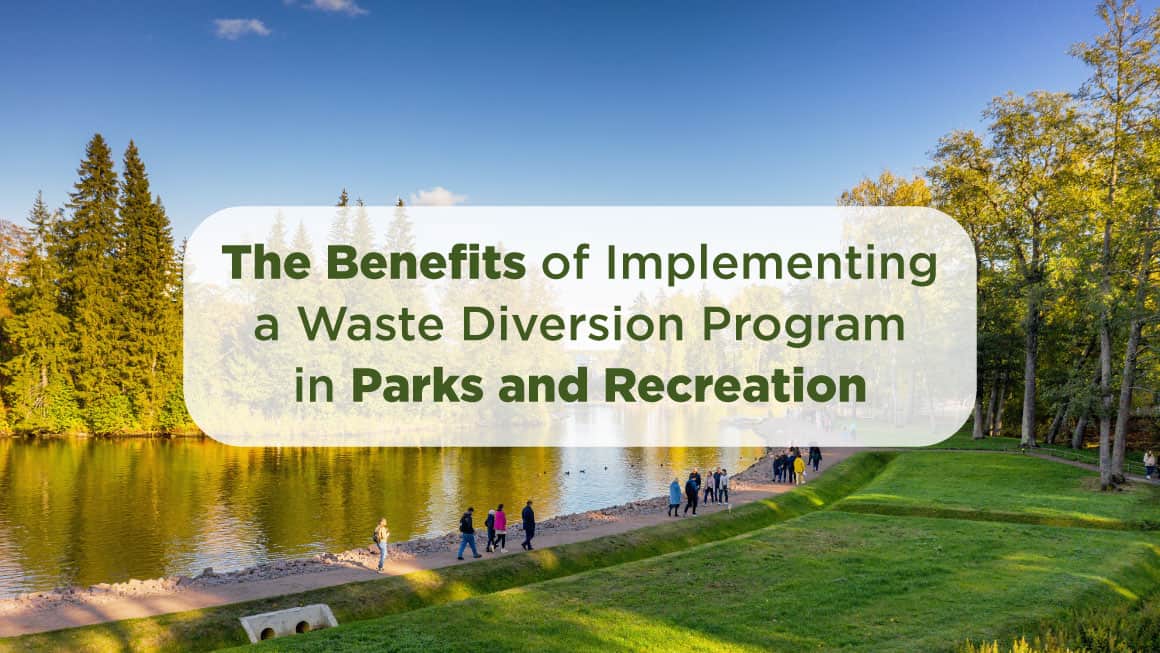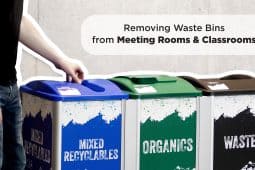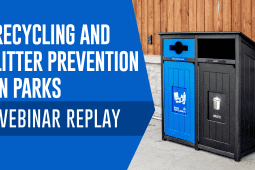Parks and recreational spaces are cornerstones of community life, providing residents and visitors with a place to gather, relax, and enjoy nature. However, with high foot traffic and diverse activities, these spaces are also significant generators of waste. Whether it’s plastic water bottles, food packaging, or organic waste, managing this waste responsibly is crucial for maintaining the beauty and functionality of these spaces.
Implementing a comprehensive waste diversion program can transform parks and recreation facilities into models of sustainability. A well-designed program not only improves waste management but also enhances the overall visitor experience and supports broader environmental and community goals. In this blog, we’ll explore the key economic, social, and environmental benefits of adopting a waste diversion strategy for parks and recreation facilities.

Economic Benefits
A successful waste diversion program can deliver significant cost savings for parks and recreation departments. Here’s how:
- Reduced Waste Disposal Costs: By diverting recyclables and compostable materials from the landfill, parks can significantly decrease the amount of waste sent for disposal. This reduction translates directly into lower tipping fees and waste hauling expenses, which can amount to substantial savings over time. In regions where landfill costs are high, this can lead to immediate budgetary relief.
- Potential Revenue from Recyclable Materials: Implementing a recycling program allows parks to capitalize on the value of materials such as aluminum cans, paper, and plastics. Depending on market conditions, these materials can be sold to recycling facilities, generating additional revenue to reinvest into park maintenance or programming.
- Optimized Operational Efficiency: A structured waste diversion system streamlines waste management operations, reducing the time and labor required to sort and dispose of materials. This efficiency allows park staff to focus on core responsibilities, enhancing overall productivity and freeing up resources for other initiatives.
- Funding Opportunities and Grants: Many governmental and environmental organizations offer grants and funding to support waste diversion initiatives. By adopting a comprehensive program, parks and recreation departments may become eligible for such funding, which can be used to further expand or enhance their waste management efforts.
Investing in waste diversion is not just a cost-saving measure—it’s a strategic approach that can boost the financial health of parks and recreation facilities while reinforcing their commitment to sustainability.
Social Benefits
The benefits of a waste diversion program extend far beyond cost savings. Implementing such initiatives in parks and recreational areas can enhance community engagement and promote social responsibility:
- Increased Community Awareness and Education: A visible and effective waste diversion program educates park visitors on proper recycling practices and environmental stewardship. Signage, educational campaigns, and outreach activities can foster a greater understanding of waste reduction and encourage visitors to adopt similar practices at home.
- Enhanced Public Image and Community Relations: Parks and recreation facilities that prioritize sustainability initiatives demonstrate leadership and a commitment to community values. This enhances their public image and strengthens relationships with local stakeholders, visitors, and environmental organizations.
- Encouraging Positive Behavior Change: When parks set up clear, user-friendly waste diversion systems, it prompts visitors to think twice before throwing items away. Over time, this can influence long-term behavior change, contributing to a more environmentally conscious community.
- Creating a Cleaner, More Enjoyable Environment: Proper waste diversion reduces litter, making parks cleaner and more welcoming for everyone. A well-maintained park encourages visitors to treat the space with respect, promoting a sense of ownership and responsibility among community members.
Environmental Benefits
Perhaps the most compelling reason to implement a waste diversion program is its positive impact on the environment. Effective waste management in parks can help mitigate some of the most pressing environmental issues facing our planet today:
- Reduction of Landfill Waste: By diverting materials from the landfill, parks can help decrease the volume of waste that contributes to land degradation, methane emissions, and the loss of usable land. This is a critical step in addressing climate change and promoting sustainable land use.
- Conservation of Natural Resources: Recycling conserves natural resources by reducing the need for raw material extraction. For example, recycling paper helps preserve forests, while recycling metals and plastics reduces the need for mining and oil extraction. This contributes to the long-term sustainability of our planet’s ecosystems.
- Lower Greenhouse Gas Emissions: Organic waste, when sent to a landfill, generates methane—a potent greenhouse gas that has a far greater impact on global warming than carbon dioxide. Composting organic materials instead helps capture this carbon and return nutrients to the soil, reducing harmful emissions and supporting soil health.
- Promoting Biodiversity and Healthy Ecosystems: Proper waste management helps protect local wildlife and plant life from the harmful effects of pollution. By preventing waste from entering natural habitats, parks can contribute to preserving the biodiversity and ecological balance that make these spaces valuable for both people and wildlife.
Implementing a waste diversion program in parks and recreation facilities is not just a strategy for better waste management—it’s an investment in the long-term sustainability and vibrancy of these vital community spaces. The economic benefits include reduced costs and potential revenue streams, while the social benefits extend to community education and enhanced public image. Most importantly, the environmental impact is profound, helping to protect natural resources, lower emissions, and promote healthier ecosystems.
By adopting a comprehensive and well-communicated waste diversion strategy, parks can set a positive example for the community, create a cleaner and more welcoming environment, and contribute meaningfully to global sustainability goals. In the end, these efforts not only preserve the beauty and functionality of parks but also inspire communities to embrace a greener and more responsible way of life.













